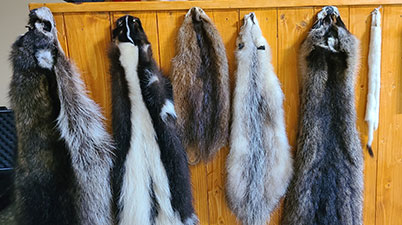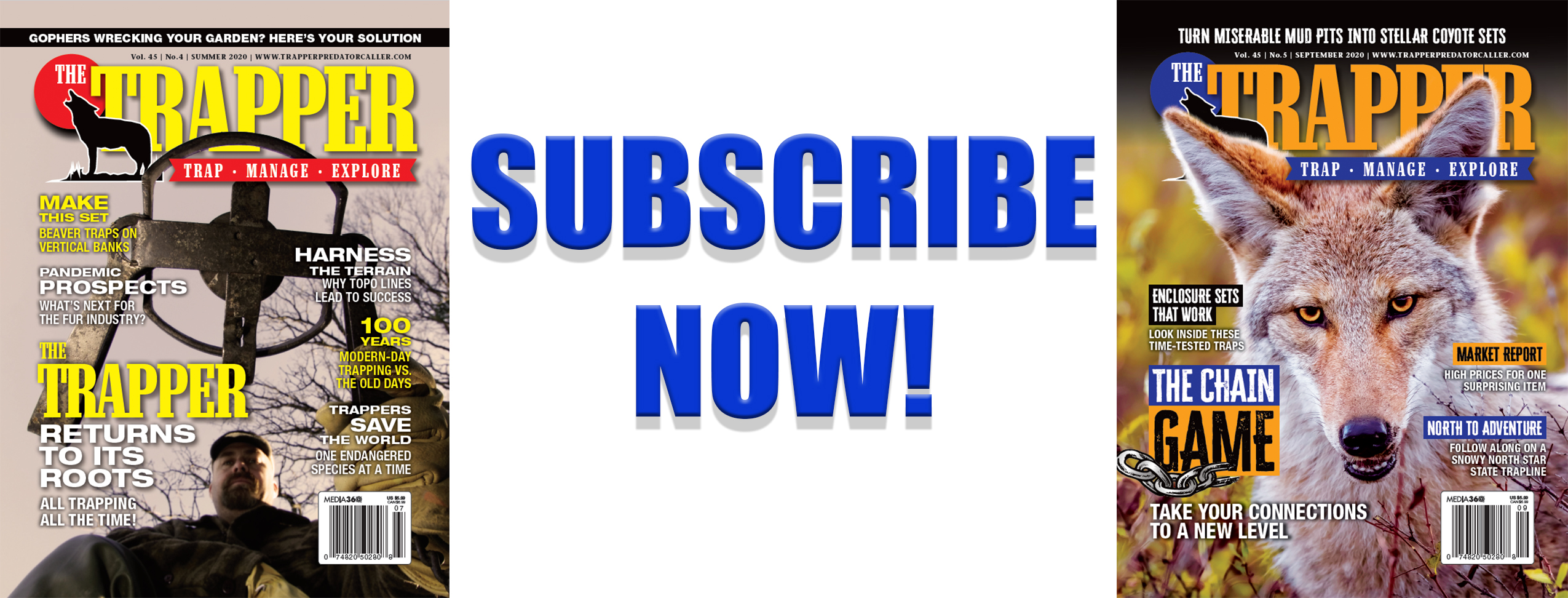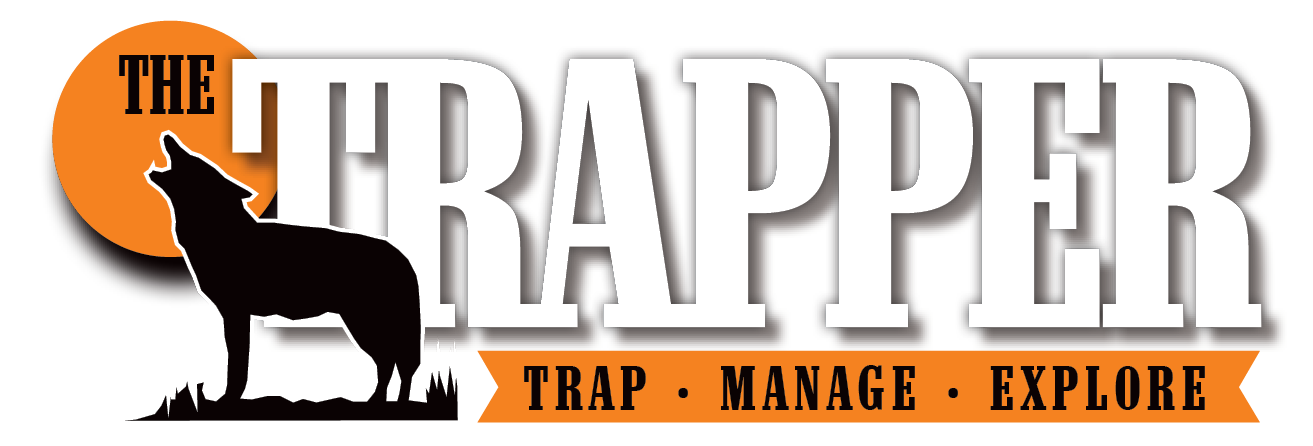By Serge Lariviére
Most trapping seasons have now wrapped up across the United States and Canada, and other than spring muskrats and beavers, most of the harvesting is over. The fur industry is bizarre in many ways, but one of the funky things about it is that harvesting occurs in fall and early winter, then big fur sales, the ones that set the official price trends, occur after all the harvesting is completed. So in other words, by the time we know what monetary value furs will bring, it is too late to do anything about it.

Tanned furs make great wall hangings and eBay is a great place to start selling. Photo credit Jason Houser.
Usually, and past history typically reveals this, a one-year delay in correlation, meaning that prices one year influence the harvest the next year. Sometimes we can predict it with great certainty, other times, we can only speculate. Most trappers in the field this fall went in with low price expectations, and sadly, my best guess is this is what you will receive. The world is still battling an ongoing pandemic that does not seem to want to end, and the impacts are disastrous for the industry we love so much.
In mid-January, China went into further confinement measures and the entire world tried to speed up vaccination programs to try and slow the spread of the Omicron variant, but outbreaks make public gatherings tough at best. Confinement of people in their homes does nothing to stir interest in fur coats or fur garments, and manufacturers slow down with fewer staff, reduced production or complete stoppage altogether.
Money is tied up in current unsold inventory or furs stockpiled in freezers, waiting for the market to rebound. Retail sales move very little and the mid-January confinement in several Chinese cities, only a few weeks before Chinese New Year (February 1, 2022), did not help boost fur sales. International travel, although possible, is complicated by vaccination requirements, testing before departure and/or after arrival, confinement periods while awaiting results, etc.
Regardless of your own personal stance on all these measures (and many vary according to the country or even province or state you live in), none of them help facilitate buyer attendance at public auctions. Private buyers play it safe, and they should, as there are basically still no indicators or any major upswing in the market.
Most fur species should remain at last year’s low prices, and expect some more cooling off of the coyote market. Yes, top-quality skins will continue to bring $100 or more, but lower grades will fall off rapidly. The last remaining auction house for wild fur, Fur Harvesters Auction, has even warned their shippers about the softening of the coyote market on their most recent market update. So expect good coyotes to sell, and probably all decent coyotes to sell, but at softer prices — so probably 10% to 15% lower than last year.
Uncertainty about prices is reflected in the harvest of wild fur, and many buyers reported very low harvest, especially of bottom-priced species that require hard work. Raccoons and beavers are two of the most important species for our trade, because numbers-wise, they keep many trappers alive and operating. Up north, beaver is the backbone of many traplines and down south, raccoons are abundant almost everywhere and they can be harvested in great numbers — when the price motivation is there. But raccoon quality varies greatly — some areas produce beautiful raccoon pelts (Wisconsin, Minnesota, Iowa), while Southern pelts bring very little. Also, prime pelts easily bring twice the value of blue-leathered skins, so harvesting raccoons when they are prime is key. In tough market years like the ones we face right now, even the best skins are tough to sell, or they sell at bottom prices. So catching early, blue-leathered raccoon is definitely a bad strategy — even if you could catch them in the thousands!
If you have accesss to tons of beavers, the money is in the castor glands, which continue to fetch upwards of $90 to $100 per pound for the premium glands. On big beavers, that is easily $10 just for the castor glands. Explore options for beaver meat for human consumption or for bear baits or dog food. An additional $10 to $20 per animal can be made if the right market is found. Expect $8 to $15 for the skin for larger pelts, assuming prime pelts with no damages. Castoreum is where the beaver money is right now. Sad, but at least an incentive to go help your local landowners with their beaver problems.
The first major international fur sale of the year is scheduled to happen March 24-28, 2022, in North Bay, Ontario, Canada, at Fur Harvesters Auctions (www.furharvesters.com).
In the best-case scenario, borders will open up freely and the auction room will be full of international buyers. I fear, however, that the ongoing health measures imposed by authorities in charge of managing the COVID pandemic will make this event tough to attend for some. I hope I am wrong. Our industry needs a breath of fresh air, and all key players in the trade would gain from a strong sale at Fur Harvesters. Results of the first sale likely will be posted on their website no later than mid-April, and we will be able to review them in great detail in the next “Fur Market Report” in the Trapper’s summer edition. Let’s keep our fingers crossed!



